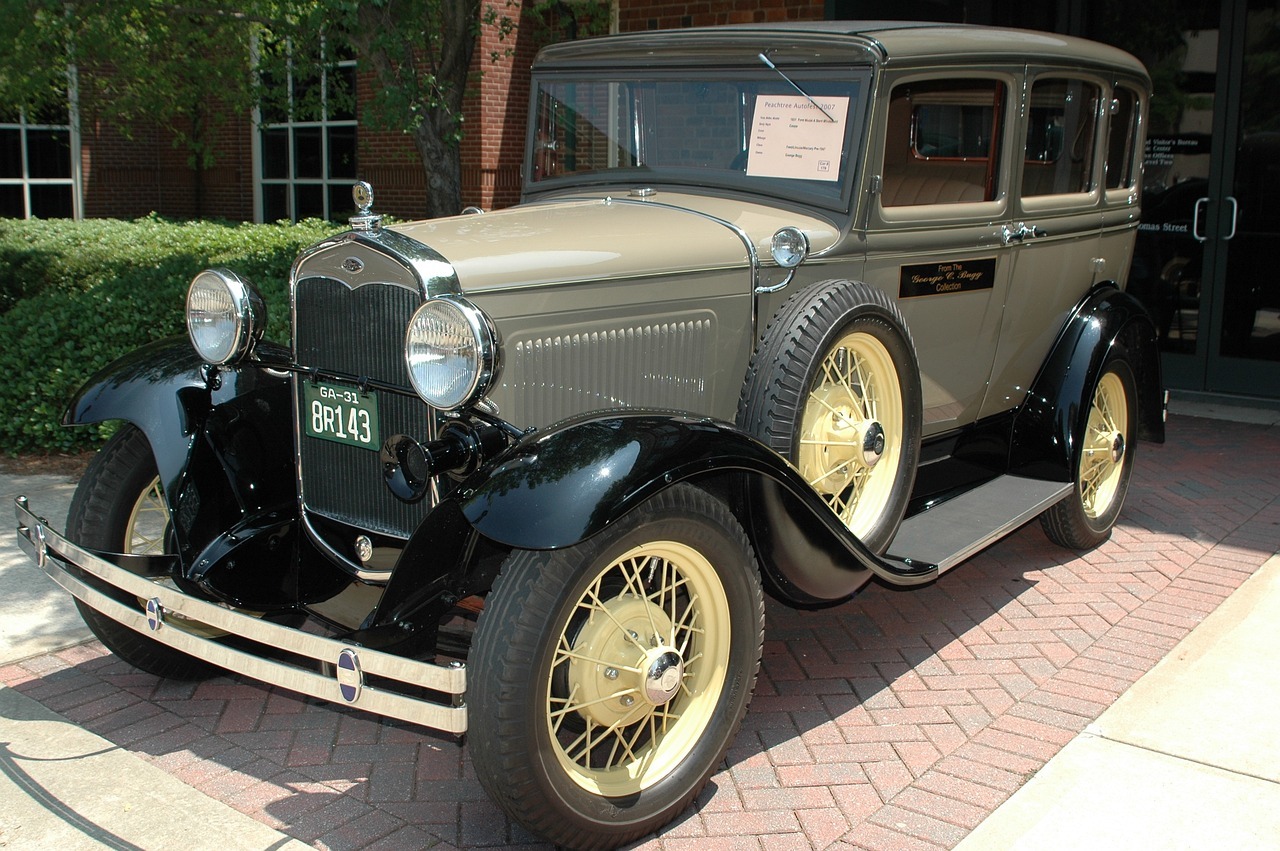The history of the automobile warranty is like taking a ride through time, from the early days of the horseless carriage to the advanced, computer-filled vehicles we drive today. Just as cars have evolved over the years, so too have the promises made by manufacturers to stand behind their products. In this journey, we’ll explore how the concept of the automobile warranty has developed, adapting to the changing landscape of technology, consumer expectations, and the ever-reliable human desire for peace of mind when it comes to our four-wheeled companions. So, fasten your seatbelts, and let’s take a trip down the warranty lane!
Early Days of the Automobile: Lack of Warranty
The story of the automobile warranty begins in the late 19th century, with the birth of the very first automobiles. It was a time of great innovation and experimentation. In 1885, Karl Benz, a German engineer, built what is often considered the first true automobile, the Benz Patent-Motorwagen.
As the 20th century dawned, automobiles became more prevalent, but the absence of warranties remained the norm. People were eager to embrace this new mode of transportation, despite the fact that cars were often unreliable and required frequent repairs. Manufacturers were still figuring things out, and warranties were not a priority. It was a risky proposition to invest in a car at this time, as there were no guarantees that it would work as expected. If your automobile broke down, you would have to foot the bill for repairs.
The lack of warranties highlighted the urgent need for improvement and reliability in the automotive industry. With cars becoming an essential part of daily life for many, the unreliability of early automobiles was a significant issue. Breakdowns and maintenance were a constant concern for early car owners. This prompted both manufacturers and consumers to recognize the necessity of a more structured way to address these issues.
The Emergence of Limited Warranties
With several issues faced by drivers in their initial driving periods of new cars, the concept for manufacturer’s responsibility came alive.
In the early 20th century, the automobile industry saw a significant shift with the emergence of limited warranties. Manufacturers began to recognize that providing some level of assurance to customers could set them apart in a competitive market. Limited warranties, which covered certain components of a vehicle for a specified period, started to become a selling point.
The introduction of the Ford Model T, also known as the “Tin Lizzie,” in 1908, played a pivotal role in the evolution of automobile warranties. Henry Ford’s innovative production methods allowed for mass production, which resulted in more affordable cars for the general public. However, the Model T did not come with a warranty initially, reflecting the prevailing norms of the time.
However, eventually, as manufacturers including Ford realized, the concept of warranty became a reality. For example, in 1925, a typical warranty for a Ford car was a mere 90 days on materials and 30 days on labor. But it was a start – a guarantee that some level of quality and reliability could be expected from these early vehicles.
Automakers Responding with Longer Warranties
To meet the rising consumer expectations, automakers began to respond by offering longer warranties. This was not only a way to attract buyers but also a reflection of their growing confidence in the quality and durability of their vehicles.
1950s
In the 1950s, the post-World War II economic boom led to a surge in consumer demand for automobiles. To gain a competitive edge, automakers began extending their warranty offerings. For example, in 1957, Chrysler made automotive history by introducing the “5-Year/50,000-Mile Powertrain Warranty.” This groundbreaking warranty gave buyers an unprecedented level of confidence in the durability of their vehicles. Chrysler’s bold move set a new standard in the industry, and other manufacturers followed suit to keep up with customer expectations. As a result, the 1950s can be seen as the decade when the concept of comprehensive warranties started gaining momentum.
1960s
The 1960s continued the trend of extending warranty coverage. Automakers recognized the importance of consumer trust in an increasingly competitive market. Ford, for instance, introduced its “Lifetime Powertrain Warranty” in 1963. While this wasn’t truly a lifetime warranty, it was a powerful marketing tool to attract customers. It showcased the manufacturers’ growing confidence in their vehicles’ powertrain systems, and customers were drawn to the idea of long-term protection.
1970s
The 1970s were marked by an increasing focus on consumer protection and rights. As environmental regulations and safety standards became more stringent, automakers were pressured to provide longer and more comprehensive warranties. The Magnuson-Moss Warranty Act, enacted in 1975, set rules for warranties and encouraged manufacturers to offer clearer and more reliable warranty terms. This legislation further contributed to the growth of consumer-oriented warranty offerings.
1980s-1990s
During the 1980-90s, automakers continued to refine their warranty offerings. They recognized that extended warranties were essential in gaining and retaining customer loyalty. For instance, in 1998, Hyundai and KIA introduced the groundbreaking 10-Year/100,000-Mile Powertrain Warranty in the United States, an initiative to reassure customers about the long-term reliability of their vehicles. Other manufacturers adapted their warranties to be more competitive, emphasizing not just the quality of their vehicles but also their commitment to customer satisfaction.
2000s
As the 21st century began, automakers continued to adjust their warranties to meet evolving consumer expectations. More emphasis was placed on comprehensive warranties, including aspects like roadside assistance and coverage for high-tech components. For instance, in 2006, Hyundai expanded its warranty coverage to include a “10-Year/100,000-Mile Powertrain Warranty with 5-Year/60,000-Mile Bumper-to-Bumper Warranty.” This approach demonstrated the growing reliance on technology in vehicles and the manufacturers’ determination to stand behind their products.
Modern Day: Types of Warranty Offered
In modern times, automobile warranties come in various types, each offering different levels of coverage and duration. Here are some common types of warranties offered by manufacturers and dealerships:
Bumper-to-Bumper Warranty
This type of warranty, also known as a comprehensive warranty, covers most components of the vehicle, excluding only wear-and-tear items like tires and brakes. It typically lasts for a specific period, such as three years or 36,000 miles, and provides extensive coverage for mechanical and electrical systems.
Powertrain Warranty
A powertrain warranty focuses on the essential components that make the vehicle move, such as the engine, transmission, and drivetrain. It offers longer coverage than the bumper-to-bumper warranty, often spanning five years or 60,000 miles, and sometimes up to 10 years or 100,000 miles.
Corrosion or Rust Warranty
Corrosion warranties cover the vehicle’s body and sheet metal against rust perforation. These warranties are usually in effect for a more extended period, often ranging from five to ten years, depending on the manufacturer.
Emissions Warranty
In compliance with environmental regulations, automakers provide emissions warranties that cover the vehicle’s emission control components for a specific duration. These warranties are typically valid for eight years or 80,000 miles.
Hybrid and Electric Vehicle (EV) Battery Warranty
With the rise of hybrid and electric vehicles, manufacturers often offer separate warranties for the vehicle’s high-voltage battery. These warranties can last for a more extended period, sometimes up to 8-10 years or more, and cover defects and reduced capacity.
Roadside Assistance
Many warranties include roadside assistance services, providing support in case of breakdowns, flat tires, lockouts, or other emergencies. This service is often offered for the duration of the bumper-to-bumper or powertrain warranty.
Extended Warranties
Extended warranties, sometimes called service contracts, are typically sold separately and cover additional components or provide an extension of the standard warranty. Buyers can opt for extended coverage, often spanning several years and tens of thousands of miles beyond the original warranty.
Maintenance Plans
Some automakers offer prepaid maintenance plans that cover scheduled maintenance services, such as oil changes, tire rotations, and brake inspections, for a set duration or mileage limit.
CPO (Certified Pre-Owned) Warranty
When buying a certified pre-owned vehicle, customers often receive a warranty from the manufacturer or dealership. These warranties typically cover a range of components and provide extra peace of mind for used car buyers.
Limited Lifetime Warranties
In some cases, manufacturers offer limited lifetime warranties on specific vehicle components, such as the engine or transmission. These warranties are subject to certain conditions and are meant to inspire confidence in the durability of these critical parts.
Conclusion
The history of the automobile warranty takes us on a fascinating journey through time, reflecting the evolution of the automotive industry and the changing expectations of consumers. In the modern era, a diverse array of warranties caters to the needs and desires of car owners, providing peace of mind and protection for an ever-advancing and technology-laden fleet of vehicles. The journey down the warranty lane is a testament to the enduring human desire for trust and reliability in our four-wheeled companions.



